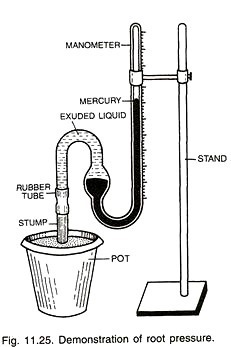In this article we will discuss about the life cycle of phage M13.
M13 uses the F pilus of E. coli to infect the cell. Protein pill located on the tip of M13 contacts the TolA protein located on the pilus of host cell. This interaction causes a conformational change in pVIlI from 100% alpha-helix to 85% alpha-helix resulting in the shortening of filament.
The end of the particle attached to the F pilus of host flares open, exposing the phage DNA. Thereafter, a second conformational change occurs in pVIII protein subunits resulting in reduction of its alpha-helix from 85% to 50%.
This causes the phage particle to form a hollow spheroid of about 40 nm in diameter. Eventually, the phage DNA is expelled into host cell (Fig. 18.25). Inside the host cell, the (+) sense ssDNA genome is converted to a complementary (-) strand by using the bacterial enzymes.
DNA gyrase acts on dsDNA and catalyzes the formation of negative supercoils in double-stranded DNA. This results in final product as replicative form (RF) dsDNA by using cellular machinery of the host.
Now, this DNA acts as a template for expression of the phage genes. The (-) sense dsDNA of RF is template of transcription and mRNAs produced are translated into the phage proteins. Two phage gene products play a key role in amplification of the genome.
The protein pll makes nick on RF form of dsDNA to begin replication of (+) strand of DNA. Host enzymes copy the replicated (+) strand, resulting in more copies of phage dsDNA. Protein pV competes with synthesis of dsDNA through sequestering the copies of the (+) strand DNA into a protein-DNA complex. This is destined for packaging into new phage particles.
Inside the host, the number of dsDNA genomes is regulated by the phage-encoded protein pX. No (+) strands can accumulate without pX. Protein subunit pX is identical to the C-terminal portion of pll because gene 10 for pX is within the gene for pll and the protein synthesis is started within the gene 2. This makes the synthesis of a compact and efficient phage progenies.
The phage-encoded proteins (pFV, pi and its translational restart product pXI) are involved in phage maturation. Assembly occurs at the inner membrane of the cell. Several copies of pIV are assembled in the outer membrane.
Five or six copies of pi and pXI proteins get assembled in the bacterial inner membrane. In the periplasm, the C-terminal portions of pi arid pXI interact with the AT-terminal portion of pIV. The pi- pXI- pIV complex forms the channels through which the mature phage particles are secreted from the bacterial host.
In this process, two minor phage coat proteins (pIX and pVII) interact with the pV-ssDNA complex at a region of DNA packaging sequence. DNA is extruded into the periplasmic space and the pV protein that covers the ssDNA is then replaced by pVIII protein embedded in the bacterial membrane.
The pV is recycled to form further efficient particles. The growing phage filament is threaded through the pi, pll, pIV channel. After fully coating phage DNA with pVIII, secretion terminated by adding the pIII/pVI cap.
Therefore, the new phage particle gets detached from the bacterial surface. It takes 10 minutes in synthesis of new phage in the infected host. Within the first hour of infection, the new phage particles are secreted at a rate of 1000/cell. The host cell continues to grow and divide.
